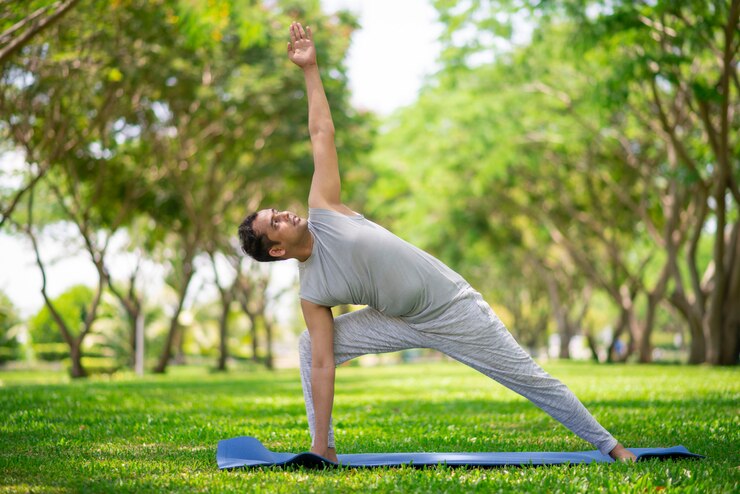Overview of Exercise:

- Exercise is physical activity performed to improve or maintain fitness, health, and well-being.
- It involves repetitive movements of the body’s muscles to enhance strength, endurance, flexibility, or cardiovascular fitness.
- Types of exercise include aerobic exercise, strength training, flexibility exercises, and balance and stability exercises.
- Aerobic exercise increases heart rate and breathing, improving cardiovascular health and endurance.
- Strength training uses resistance to build and strengthen muscles.
- Flexibility exercises improve the range of motion and elasticity of muscles and joints.
- Balance and stability exercises enhance coordination, body control, and prevent falls.
- Exercise has numerous physical and mental health benefits.
- It can reduce stress, anxiety, and improve mood.
- Exercise boosts self-esteem, cognitive function, and promotes better sleep.
- It is recommended to engage in at least 150 minutes of moderate-intensity aerobic activity or 75 minutes of vigorous-intensity activity per week.
- Muscle-strengthening exercises should be done at least two days a week.
- It is important to listen to your body, start gradually, and choose activities that you enjoy.
- Consulting with a healthcare professional before starting a new exercise routine is advisable, especially if you have underlying health conditions.
Incorporating exercise into your daily routine can lead to improved overall health, fitness, and a better quality of life.
What is the recommended duration for regular exercise?
Regular exercise is important for maintaining overall health and fitness. The recommended amount of exercise varies depending on factors such as age, fitness level, and personal goals. Here are some general guidelines:

- Cardiovascular Exercise: Aim for at least 150 minutes of moderate-intensity cardiovascular exercise or 75 minutes of vigorous-intensity exercise per week. This can be divided into shorter sessions of 30 minutes, five days a week, or longer sessions three days a week.
- Strength Training: Include strength training exercises at least two days a week. Focus on working all major muscle groups, such as the legs, arms, back, chest, shoulders, and core. Aim for 8-12 repetitions of each exercise, gradually increasing the weight or resistance as you get stronger.
- Flexibility and Balance: Don’t forget to include stretching exercises to improve flexibility and balance. Aim for 10-15 minutes of stretching exercises, such as yoga or Pilates, at least two days a week.
Remember, these are general guidelines. If you have any underlying health conditions or specific fitness goals, it’s always a good idea to consult with a healthcare professional or a certified personal trainer to determine the best exercise routine for you.
What is the recommended amount of exercise for an average person to stay healthy?
To maintain a healthy lifestyle, it is recommended that individuals aim for at least 150 minutes of invigorating moderate-intensity aerobic activity or 75 minutes of exhilarating vigorous-intensity aerobic activity each week. These activities can be enjoyed throughout the week, allowing for flexibility and variety in your fitness routine. To add a touch of excitement, consider including engaging strength training exercises at least twice a week. It is always prudent to consult with a healthcare professional before embarking on any new exercise program, as individual needs may differ. Your well-being is the top priority!
 | Remember, fitness can be fun and rewarding. So go ahead, lace up your shoes, put on your favorite workout playlist, and embrace the joy of staying active! Your body and mind will thank you for it. |







